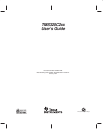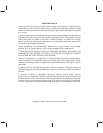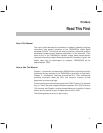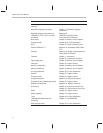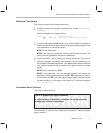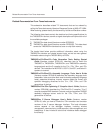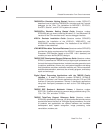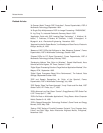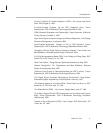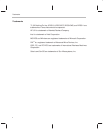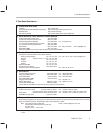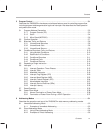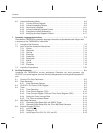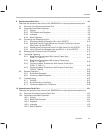
Related Documentation From Texas Instruments
vi
Related Documentation From Texas Instruments
This subsection describes related TI documents that can be ordered by
calling the Texas Instruments Literature Response Center at (800) 477–8924.
When ordering, please identify the document by its title and literature number.
The following data sheets contain the electrical and timing specifications for
the TMS320C2xx devices, as well as signal descriptions and pinouts for all of
the available packages:
TMS320C2xx data sheet (literature number SPRS025)
TMS320F2xx data sheet (literature number SPRS050). This data sheet
covers the TMS320C2xx devices that have on-chip flash memory.
The books listed below provide additional information about using the
TMS320C2xx devices and related support tools, as well as more general
information about using the TMS320 family of DSPs.
TMS320C1x/C2x/C2xx/C5x Code Generation Tools Getting Started
Guide
(literature number SPRU121) describes how to install the
TMS320C1x, TMS320C2x, TMS320C2xx, and TMS320C5x assembly
language tools and the C compiler for the ’C1x, ’C2x, ’C2xx, and ’C5x
devices. The installation for MS-DOS, OS/2, SunOS, and Solaris
systems is covered.
TMS320C1x/C2x/C2xx/C5x Assembly Language Tools User’s Guide
(literature number SPRU018) describes the assembly language tools
(assembler, linker, and other tools used to develop assembly language
code), assembler directives, macros, common object file format, and
symbolic debugging directives for the ’C1x, ’C2x, ’C2xx, and ’C5x
generations of devices.
TMS320C2x/C2xx/C5x Optimizing C Compiler User’s Guide
(literature
number SPRU024) describes the ’C2x/C2xx/C5x C compiler. This C
compiler accepts ANSI standard C source code and produces TMS320
assembly language source code for the ’C2x, ’C2xx, and ’C5x
generations of devices.
TMS320C2xx C Source Debugger User’s Guide
(literature number
SPRU151) tells you how to invoke the ’C2xx emulator and simulator
versions of the C source debugger interface. This book discusses
various aspects of the debugger interface, including window
management, command entry, code execution, data management, and
breakpoints. It also includes a tutorial that introduces basic debugger
functionality.



